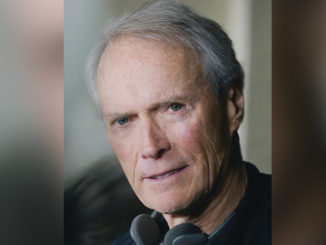
by Bonnie Buckner
In his Fireside Chat at Fox Studios on February 6, Arthur Schmidt described how his approach to editing has varied, depending on the project he was working on at the time. “I listen to the film,” he said. “I always try to let the film and story tell me where to go next.”
Understanding the movie gives him a sense of how to structure his scenes, he added. “I used to think that you just started when you sat down to edit,” Schmidt said. Later, he realized that he had to prepare before starting a scene, watching all the dailies and editing the footage first in his head. “I analyze the scene and give it structure. I don’t over-intellectualize. I listen to gut instincts.”
Those gut instincts served him well early in his career, when he worked on The Jericho Mile, a television movie directed by Michael Mann. Schmidt was originally hired as the second editor on the project. The main editor was taking a conventional approach, but Schmidt realized that Mann’s vision for the story was much less standard, and that traditional editing wasn’t working.
Schmidt thought about how the project would have been handled by the best editors he had assisted, including Dede Allen and Jim Clark, and concluded they would have been bold and unconventional in their approach. Keeping his mentors in mind, he cut a scene using an unusual flash forward technique. Schmidt was terrified when he screened the scene for Mann, but the director loved it. Within four days, Mann replaced the original editor with Schmidt, who clearly understood his intent for the film. The trick, Schmidt said, is to “look into the director’s head to read the film.”
Schmidt went on to win both an Emmy and an Eddie for The Jericho Mile. He said he never thought he could win awards for “bad cuts,” but this project taught him that matching cut to cut is ultimately less important than editing for drama or story.
Schmidt feels that an editor is hired to tell the story as seamlessly as possible.
Years later, Schmidt was able to draw on his experience with The Jericho Mile for a Christmas dinner scene in Cast Away. At first glance, the Cast Away scene appears simple – Tom Hanks, Helen Hunt and their friends and family are seated around a table, eating. But the characters have a lot of “business,” passing food, eating, drinking and chatting. The scene was covered with two handheld cameras, one wide and the other close. Most of the dialogue overlapped. It turned out to be one of the most difficult scenes to cut.
Again, Schmidt thought of what he had learned from other editors. Jim Clark, he remembered, would listen to the dialogue first, then decide what to use. Schmidt knew the important dialogue in the Cast Away scene was between the characters played by Hanks and Hunt. He cut the dialogue first, making sure that all the multiple overlaps worked, and then cut the picture to match.
The challenge then was to build the scene visually. At first, Schmidt tried cutting to close-ups of the other characters, but he found this approach gave emphasis to irrelevant dialogue, so he decided he would never use close-ups or two-shots of the family members.
Schmidt then examined how the scene was built. Just as a movie itself is constructed on a three-act structure, he finds that every individual scene also has three acts. Applying this philosophy to the Christmas dinner scene, he was able to find its real emphasis. This enabled him to cut out the excess and not become overwhelmed by too much footage. It took Schmidt three days to cut this one scene, but in the end, he felt the final outcome was a success.
Ultimately, Schmidt feels that an editor is hired to tell the story as seamlessly as possible. “When I began my career as an assistant I worked on so many bad films that I thought the editor’s main job was to fix everyone else’s mistakes. Now I know there is a lot more to it than that.”





